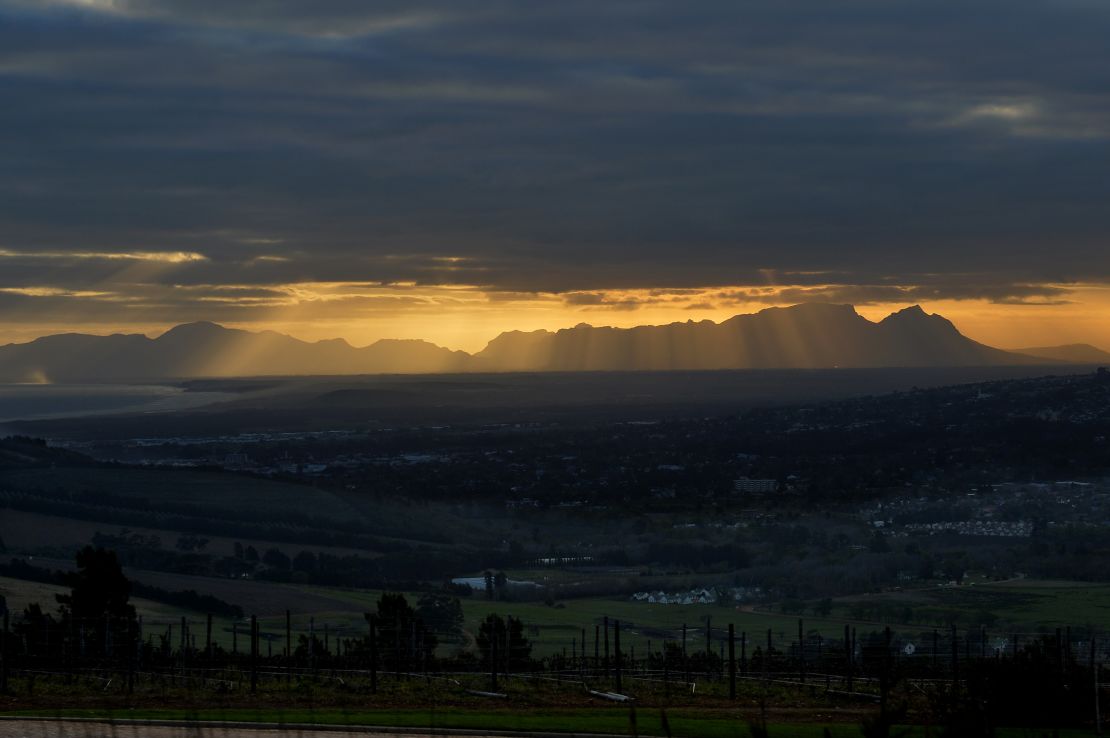Story highlights
South African red wines saw a 50% jump in price at an annual industry auction
Foreign investors such as Richard Branson and French wine giant AdVini are buying up vineyards
Exports are projected to increase by 13% between 2015 and 2025
Image is everything, some say, and wine is no exception.
For the past 20 years, South Africa’s Cabernets and Chardonnays have fought hard to compete with their Old World rivals, which lean upon the strong reputation of historic wine making regions such as Bordeaux and Bourgogne.
But now the fight is paying off. From success in new markets such as China and the U.S. to record auction prices and high scores in blind tastings, South African wines are gaining recognition and big players are taking note.
Last month the French wine giant AdVini acquired 51% of Ken Forrester Wines, a major producer in the South African wine industry – the most recent example of a number of acquisitions over the past few years.
Auction sales hit all-time high
At the country’s annual Nederburg auction in September, prices per litre for the wines on sale hit an all-time high, with red wines seeing a 50% increase in the average price.
“There is a growing international interest in South African wine. We are no longer being seen as a marginal, or new worldish industry,” says Ken Forrester, who will remain as CEO for the business with the same name after the French takeover.

Wine in South Africa
Forrester, who has watched his business grow substantially over the past 24 years, says the partnership is “a fantastic synergy” which will open doors to new countries and markets.
“They are a French listed company on the Paris stock exchange, with 28 wineries of their own and more than 100 market managers. Hong Kong is one market, Shanghai, Singapore, Brazil, the U.S.”
He expects to see double figures as a result.
“The business is currently at 80,000 9-liter cases per year. And within five years we want to be at 200,000.”
What’s in it for the French?
The French see potential in an up-and-coming industry and brand, says James Molesworth, senior editor of Wine Spectator.
“Ken Forrester is a major winery, it’s one of the best in South Africa. It’s really made a name for itself, based on Chenin Blanc, as well as some other grapes.”
South Africa has an attractive economic climate. Labor costs and land prices are low compared to other winemaking countries, Molesworth adds.
“There are economic potentials there, as opposed to, say, setting up shop in Bordeaux or Napa.”
Advini also has invested in other Stellenbosch vineyards in recent years, including Le Bonheur Wine Estate and L’Avenir.
“South Africa is a hot topic right now and is starting to make inroads in the high-quality and high-price wine sector,” says Siobhan Thompson, CEO of the non-profit organization Wines of South Africa.
“[Being] part of the New World, it offers an array of opportunities to an Old World investor in terms of terroir, varietals, energy and diversity.”
The foreign interest benefits the whole industry, Thompson adds.
“It enables us to employ more people, upskill more people and acquire new technology.”
South Africa’s wine industry has grown over the past 10 years, and it is predicted to keep growing, according to a recent report by the Bureau for Food and Agricultural Policy.
Global exports increased from 151.6 million liters in 2000 to 423.5 million liters in 2015.
This is projected to increase by a further 13% by 2025.
A marriage between two worlds
And it’s not just the French who want in.
Among other high profile investors are Indian businessman Analjit Singh, U.S. Kendall Jackson Vineyards and Richard Branson who bought Mont Rochelle, a luxurious hotel and 100-acre vineyard in Franschhoek, Western Cape Province in 2014, according to the South African industry organization VinPro.

This helps boost the global image, Forrester says.
“As these foreigners invest, they add credibility to the South African products.”
Molesworth, who has been covering and tasting South African wines for 16 years, has seen the quality improve significantly, especially among high quality wines.
In terms of flavor, each variety, region and vintage has its own style and the range of flavors is as wide here as it is in other parts of the world.
A hint of cassis, cherry and plum
A high quality Cabernet Sauvignon from Stellenbosch, one of South Africa’s major wine-producing regions, typically has vivid fruity hints of cassis, cherry and plum, which are typical new world characteristics, mixed with a little urban minerality and raisins, which adds old world charm to the equation, says Molesworth.
“South Africa offers a little bit of the best of both worlds. Very vivid fruit and raisiny structures that benefits from ageing as well.”
Also U.S. consumers are warming to the newcomers to the supermarket shelves, but it’s a slow process, Molesworth says. Despite high scores and global recognition among wine aficionados, the everyday customer may still be reluctant.
“I think sometimes the South African wineries, have got a little frustrated at how long it’s taken, and they feel as if maybe they are second class citizens.”
“It takes a long time to build a reputation. You can lose it very quickly, but it takes a long time to build.”
Trouble ahead?
The past two years have seen drought in some of South Africa’s wine regions and wildfires in others.
“In South Africa there are so many different areas: coastal, inland, warm and cool climates. So you can’t just say they’ve had a bad vintage. But they have had troubles, and I think the idea that it’s an idyllic growing region is clearly not the case.”

The industry may be be predicted to grow, but there could be more trouble ahead, as climate change complicates an already unpredictable climate, Molesworth notes.
“As climate change becomes an issue going forward, South Africa is on the edge down there. And they may see the effects of climate change more drastically than in other areas.”





















